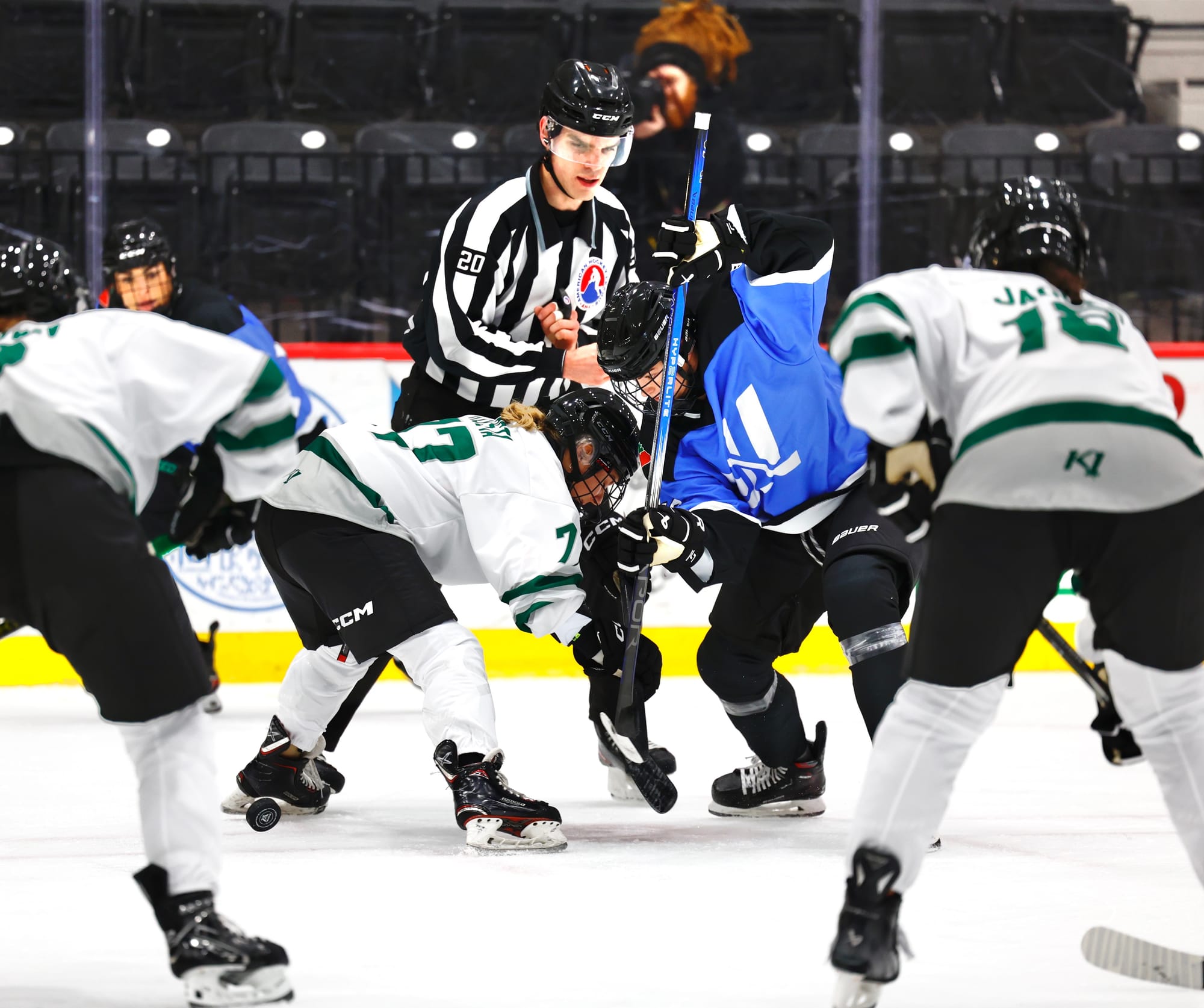As Enrollment Falls, Girls' Hockey is Booming
Girls' hockey continues to grow in North America despite barriers on both sides of the border.

Editor's Note: This story is brought to you by TIG guest contributor Erica James.
Youth hockey enrollment in Canada has been falling over the last 10 years, while American participation in hockey rises. Despite this, interest in girls' hockey as a whole is increasing.
In Canada, the Chicago Tribune reported that 40% of participants in the NHL/NHLPA First Shift program, which is a low-cost program that teaches the basics of hockey to those ages 6-10, are girls, showing that while there is an overall decrease in youth participation, girls’ participation is still growing.
There were only 6,336 girls enrolled in USA Hockey programs in 1990, according to USA Hockey Magazine. By 2008, USA Hockey Magazine reported that number had multiplied by ten to nearly 60,000, a number that did not include those playing for high school or college teams. The Baltimore Sun reported that there are over 70,000 girls playing hockey in the United States.
In Canada, the trend is the same. Hockey Canada says that only 8,146 girls enrolled in their programs in 1990 versus over 77,000 enrolled in 2008. The number of girls participating in hockey in Canada is presumably larger today, as from 2008-2010 there was an average yearly increase of 5.5%, but the data is not available from Hockey Canada. As proof of this, British Columbia Elite Hockey first started their girl’s U16 AAA league in 2018, ten years after first incorporating a girl’s league, and started a U15 AAA league in 2019.
Girls' hockey is especially growing in non-traditional markets in the United States. In the 2024 PWHL Draft, the highest-drafted American players were born in Texas and California. In Arizona, the Kachinas sent a team to the U16 AAA Tier I National Championship this past year for the first time, and although they did not win, having a team from the Sunbelt reach such a high level is proof that hockey is growing across North America.
It’s not just girls' hockey that’s growing: women’s adult hockey is also getting more popular. Women’s Ball Hockey New York City (WBHNYC) was founded in 2018 and runs tournaments and clinics. In recent years, WBHNYC had to add more tournaments, clinics, and even started a women’s ball hockey league, to meet the increasing demand. NYC Women’s Ice Hockey was founded in 2018 as a response to the lack of women’s beer leagues in New York City. Now entering its sixth season this winter, they are offering their first free try hockey day as a way to allow beginners to experience the sport.

Despite the growing interest in playing hockey, women and girls still face barriers. Like men’s hockey, women’s hockey is extremely expensive, these expenses can be compounded by the lack of opportunities for girls, meaning that they have to travel further distances or compete at lower skill levels. In non-traditional markets, there is often a lack of infrastructure such as ice rinks as well as a few qualified coaches.
At the college level, there are only 108 women’s ice hockey teams, making it one of the smallest women’s sports in the NCAA, and with so few teams that Division 1 and 2 share a championship and there are less than 10, NAIA club programs. Men’s ice hockey is one of the smallest programs among men’s sports, but it still boasts 148 teams and has both NAIA and junior college levels which boast a further 397 teams. This is changing though, with public pressure and the spike in the popularity of women’s sports enticing schools such as the University of Michigan to start exploring the possibility of adding women’s hockey programs, with other schools sure to follow.
Like many other women’s sports in the past few years, women’s ice hockey is finally getting to have its moment. In the past, there have been noticeable jumps in girl’s hockey registration after success at the Olympics or Worlds. With an easily watchable women’s league, it will be interesting to see whether that trend continues.
Editor's Note: This piece has been edited from its original publication to clarify a point regarding men's collegiate hockey.





Comments ()